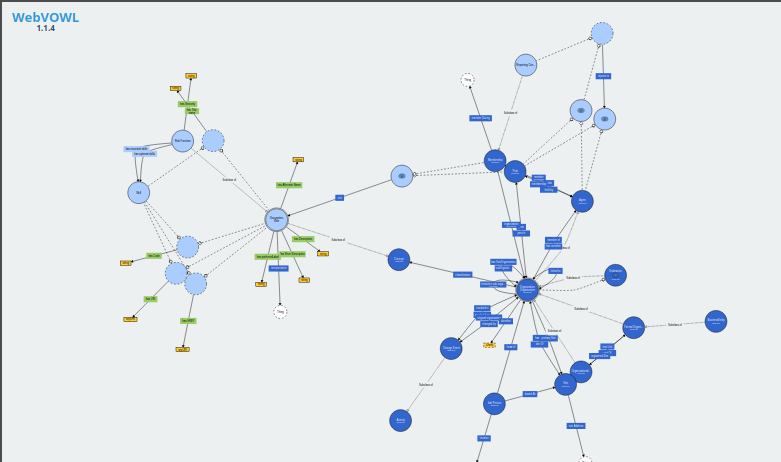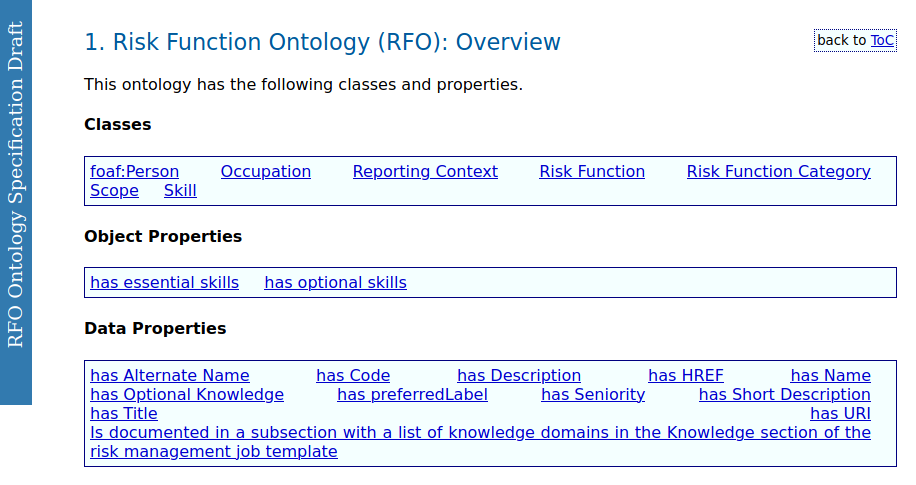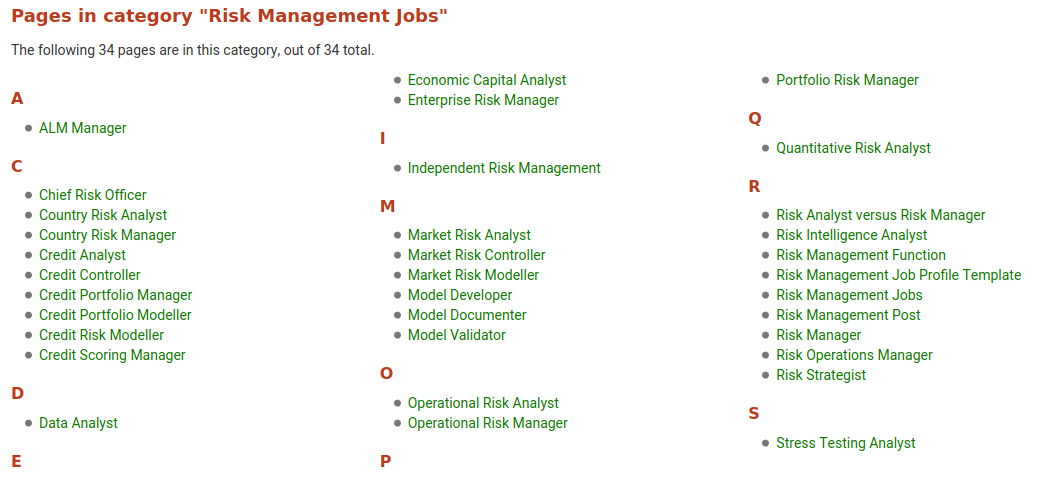Risk Function Ontology
The Risk Function Ontology (RFO) is a new ontology describing risk management roles (posts) and functions.

The Risk Function Ontology
The Risk Function Ontology is a framework that aims to represent and categorize knowledge about risk management functions using semantic web information technologies. Codenamed RFO codifies the relationship between the various components of a risk management organization. Individuals, teams or even whole departments tasked with risk management exist in some shape or form in most organizations. The ontology allows the definition of risk management roles in more precise terms, which in turn can be used in a variety of contexts: towards better structured actual job descriptions, more accurate description of internal processes and easier inspection of alignement and consistency with risk taxonomies. See also live version and the white paper OpenRiskWP04_061415.
Integrating Semantic Web Technologies
In principle any semantic technology can be the starting point for a risk function ontology. The Open Risk Manual adopts the W3C’s Web Ontology Language (OWL). OWL is a Semantic Web language designed to represent rich and complex knowledge about things, groups of things, and relations between things. Being a global standard it offers built-in interoperability and reuse.
In particular the ontology integrates with (imports) the ESCO, the European taxonomy of Skills, Competences, qualifications and Occupations. The Risk Function Ontology can be thought of as detailed leaf or branch at the bottom of the ESCO taxonomy that focuses and further segments the generic risk manager function that is available there.
The RFO Structure

As with any OWL ontology, there are three key elements to the RFO ontology (Currently 0.1 version):
- The RFO Classes that define the relevant entities (objects) and concepts characterising the Risk Management Function, this includes things like roles, skills, reporting contexts etc.
- The RFO Object Properties the define relationships between classes / concepts, e.g. A certain job has some particular technical skills or qualification requirement. Properties allow also linking to externally defined ontologies, thus embedding the RFO in a richer ecosystem.
- The RFO Data Properties, namely data literals associated with classes / concepts which provide the concrete data (strings, numbers etc) that characterise entities and their relationship
The current release does not have any concrete instances of function descriptions, but many examples are already annotated at the Open Risk Manual (more on this below).
The RFO Classes
Classes (owl:Class) are the main concepts handled by the ontology. The choice of classes defines the scope of this knowledge domain. The current classes are:
Person
Occupation
Reporting Context
Risk Function
Risk Function Category
Scope
Skill
RFO Object Properties
Object properties (owl:ObjectProperty) relate individual instances of two OWL classes with each other (and potential other ontologies. RFO imports the Organization Ontology. Additional object properties connecting roles with skills:
has essential skills
has optional skills
RFO Datatype Properties
Datatype properties (owl:DatatypeProperty) relate individuals (instances) of the RFO OWL classes to literal values. These allow linking objects to more concrete attributes.
has Alternate Name
has Code
has Description
has HREF
has Name
has Optional Knowledge
has preferredLabel
has Seniority
has Short Description
has Title has URI
Use of RFO in the Open Risk Manual and other Open Risk Ontologies

The RFO is already embedded and finds preliminary use in the Open Risk Manual and our associated Open Source Projects:
- Dedicated risk manual entries (pages) serve as user oriented documentation (annotation) of RFO elements (the relevant page is indicated / linked to via rdfs:seeAlso annotations in the RFO file itself)
- Open Source Risk Models that leverage DOAM, the Risk Model Ontology also use the manual to document risk model concepts. The two ontologies can be used together to properly document the model lifecycle (for example documenting the individuals, roles and functions that have been involved in the model development and model validation phase.)
The RFO ontology complements
Comment
If you want to comment on this post you can do so on Reddit or alternatively at the Open Risk Commons. Please note that you will need a Reddit or Open Risk Commons account respectively to be able to comment!